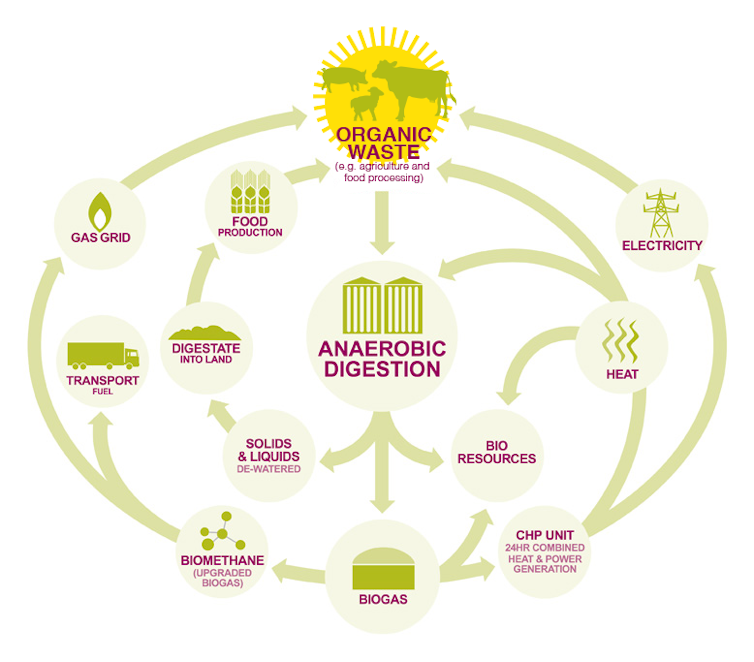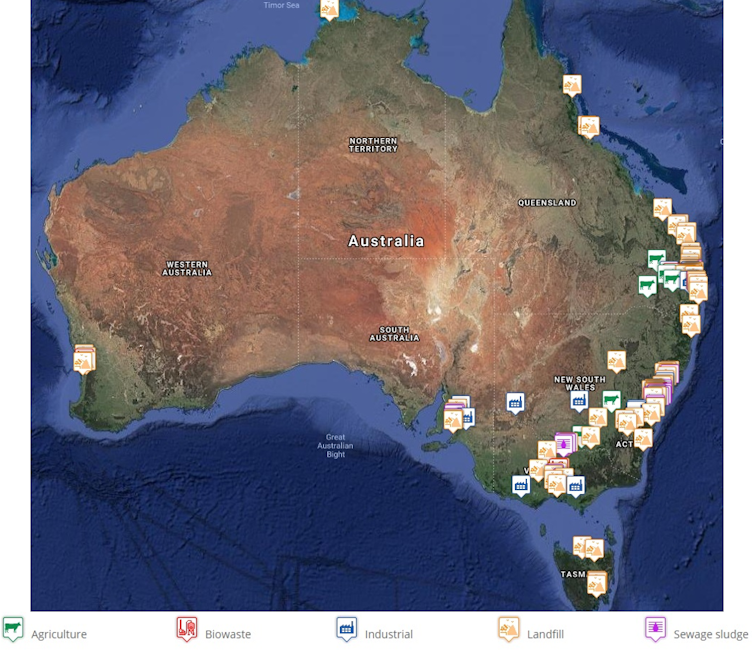How biomethane can help turn gas into a renewable energy source
- Written by Bernadette McCabe, Associate Professor and Principal Scientist, University of Southern Queensland
Australia’s report card on reducing its greenhouse gas emissions is not exactly glowing, but there are ample opportunities to get it on track during this period of rapid change in the energy sector. Greater use of renewable electricity sources like wind and solar are playing a large part in reducing emissions, and gas can also lift its game.
Gas provides nearly one quarter of Australia’s total energy supply. Around 130,000 commercial businesses rely on gas, and it delivers 44% of Australia’s household energy to more than 6.5 million homes which use natural gas for hot water, domestic heating, or cooking.
Gas has lower greenhouse emissions than most other fuels, and the gas used in power generation has about half the emissions of the current electricity grid.
Even so, natural gas can do more to help Australia meet its carbon-reduction targets.
Read more: Biogas: smells like a solution to our energy and waste problems
An industry document released last year, Gas Vision 2050, explains how new technologies such as biomethane and hydrogen can make that happen, by replacing conventional natural gas with low-emission alternative fuels.
Around the world
Worldwide, renewable natural gas is dominated by biomethane, which can be generated from organic materials and residues from agriculture, food production and waste processing.
 Multiple products of anaerobic digestion.
Modified from ADBA with permission
Multiple products of anaerobic digestion.
Modified from ADBA with permission
The top biomethane-producing countries include Germany, the UK, Sweden, France and the United States, and many others are planning to use renewable gas more widely.
A 2017 report suggests that renewable natural gas could meet 76% of Europe’s natural gas demand by 2050.
What is biomethane?
Biomethane is a clean form of biogas that is 98% methane. Also known as green gas, it can be used interchangeably with conventional fossil-fuel natural gas.
Biogas is a mixture of around 60% methane and 40% carbon dioxide, plus traces of other contaminants. Turning biogas into biomethane requires technology that scrubs out the carbon dioxide.
Biomethane’s benefits include:
- Net zero emissions
- Interchangeability with existing natural gas usage
- Ability to capture methane emissions from other processes such as landfill and manure production
- Potential economic opportunity for regional areas
- Generation of skilled jobs in planning, engineering, operating and maintenance of biogas and biomethane plants.
Australia’s potential for biomethane
While Australia currently does not have any upgrading plants, the production of biomethane can provide a huge boost to Australia’s nascent biogas industry.
The main use for biogas in Australia is for electricity production, heat, and combined heat and power.
Australia’s biogas sector has more than 240 anaerobic digestion (AD) plants, most of which are associated with landfill gas power units and municipal wastewater treatment. They also include:
- about 20 agricultural AD plants, which use waste manure from piggeries
- about 18 industrial AD plants, which wastewater from red meat processing and rendering as feedstock for biogas production;
There is also manure from around one million head of cattle in feedlots, which is currently not used to produce biogas, but is stockpiled for use as fertiliser on agricultural land.
 Australian biogas facilities.
CAE/USQ
Australian biogas facilities.
CAE/USQ
There are untapped opportunities to produce biomethane using municipal sewage sludge, red meat processing waste, residues from breweries and distilleries, food waste, and poultry and cattle manure.
Read more: Home biogas: turning food waste into renewable energy
The Australian Renewable Energy Agency is currently supporting the Australian Biomass for Bioenergy (ABBA) project. The Australian Renewable Energy Mapping Infrastructure (AREMI) platform will map existing and projected biomass resource data from the ABBA project, alongside other parameters such as existing network and transport infrastructure, land-use capability, and demographic data.
This topic and many others related to biogas and bioenergy more widely will be discussed at this week’s Annual Bioenergy Australia conference.
Of course, biomethane is just one way in which Australia can make the transition to a low-emissions future. But as natural gas is already touted as a “transition fuel” to a low-carbon economy, these new technologies can help ensure that existing gas infrastructure can still be used in the future.
Authors: Bernadette McCabe, Associate Professor and Principal Scientist, University of Southern Queensland
Read more http://theconversation.com/how-biomethane-can-help-turn-gas-into-a-renewable-energy-source-103912



